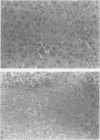Abstract
Verapamil administered before treatment, but not after treatment, had a beneficial effect on a 90-minute warm ischemia-reperfusion rat liver injury model. The possible activation of proteases converting the xanthine dehydrogenase to xanthine oxidase, the significant mitochondrial calcium loading during the ischemic period, and the potentiation of calcium and oxygen-derived free radicals to promote injury to mitochondria are mechanisms supported by this study, based on both histologic observations and on the pattern of enzyme leak after the acute ischemic event.
Full text
PDF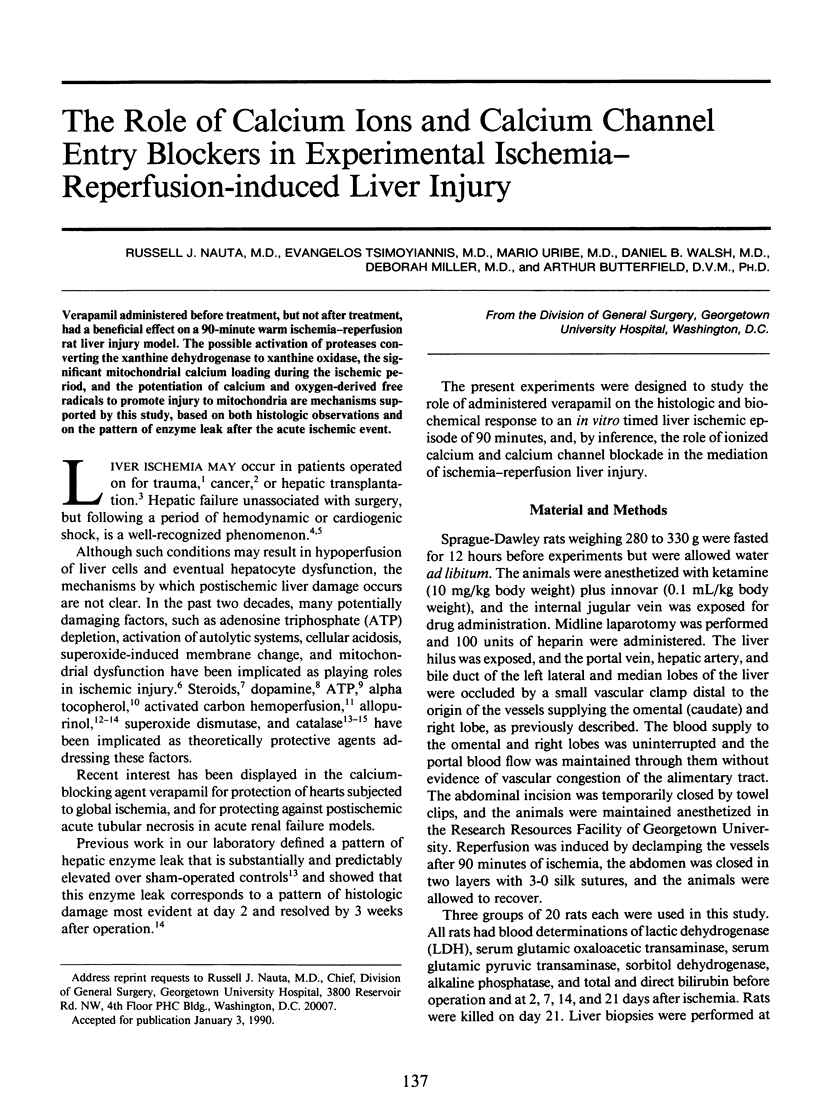
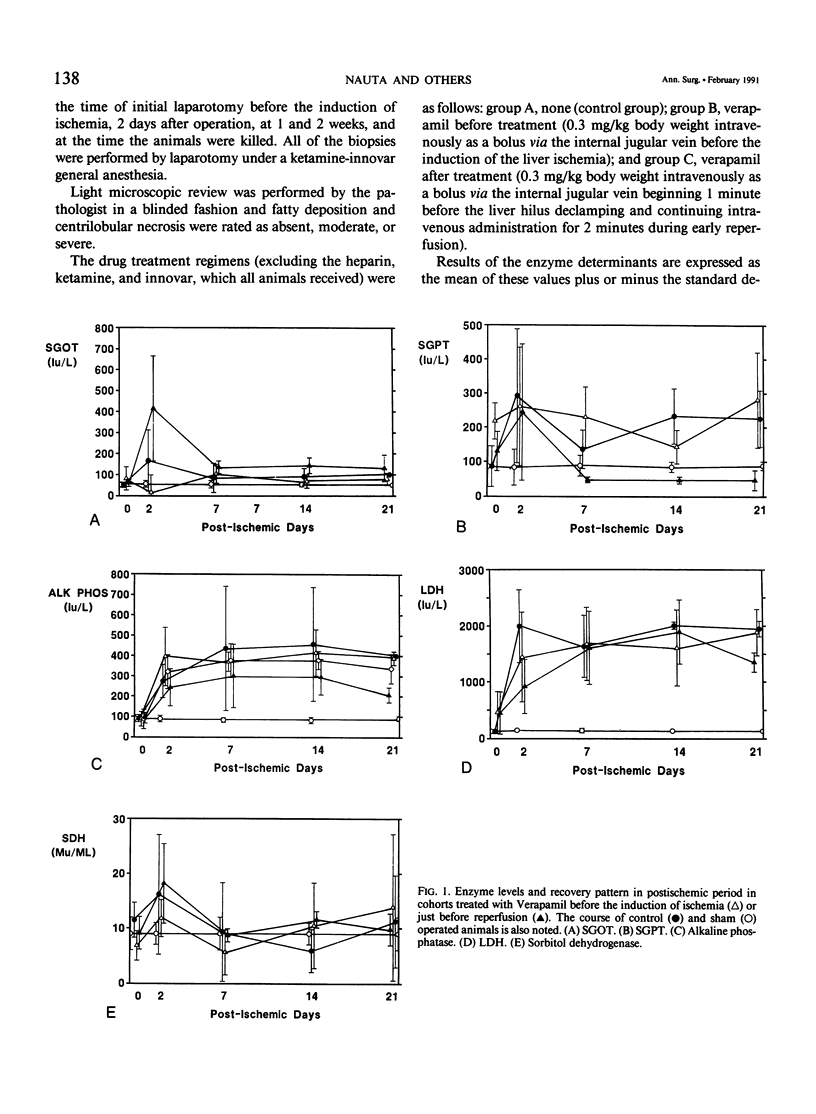
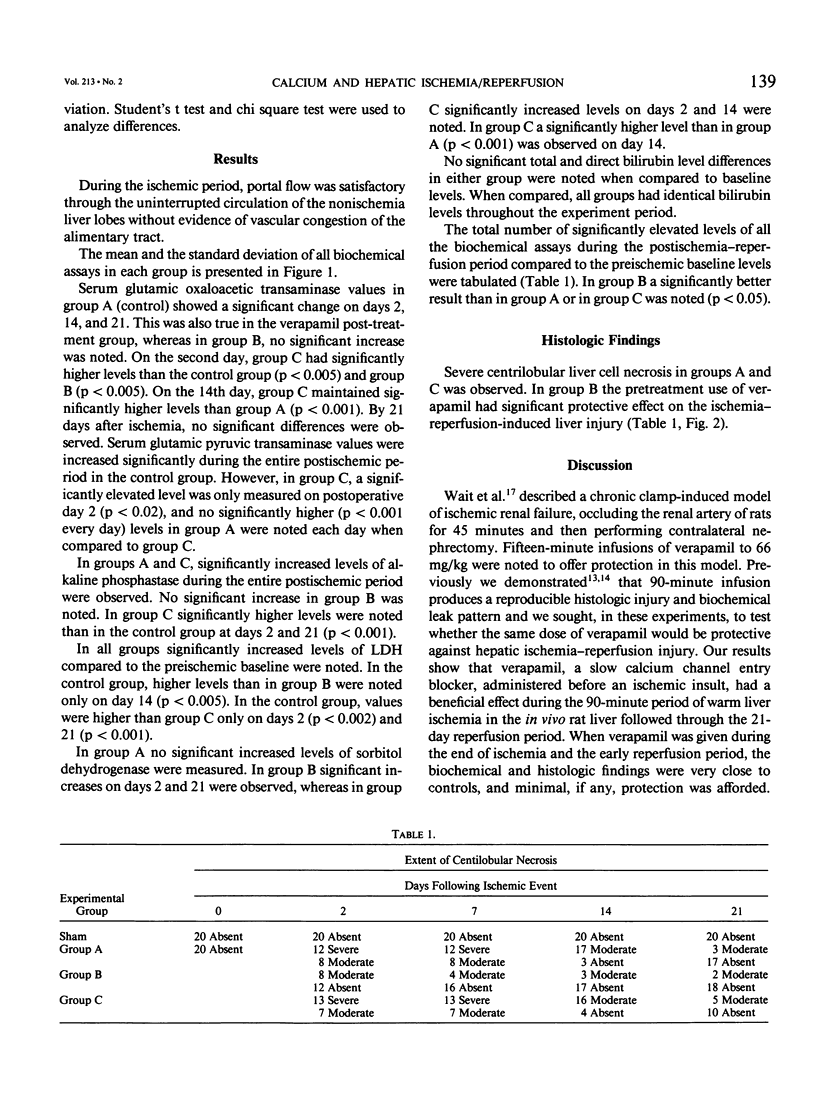

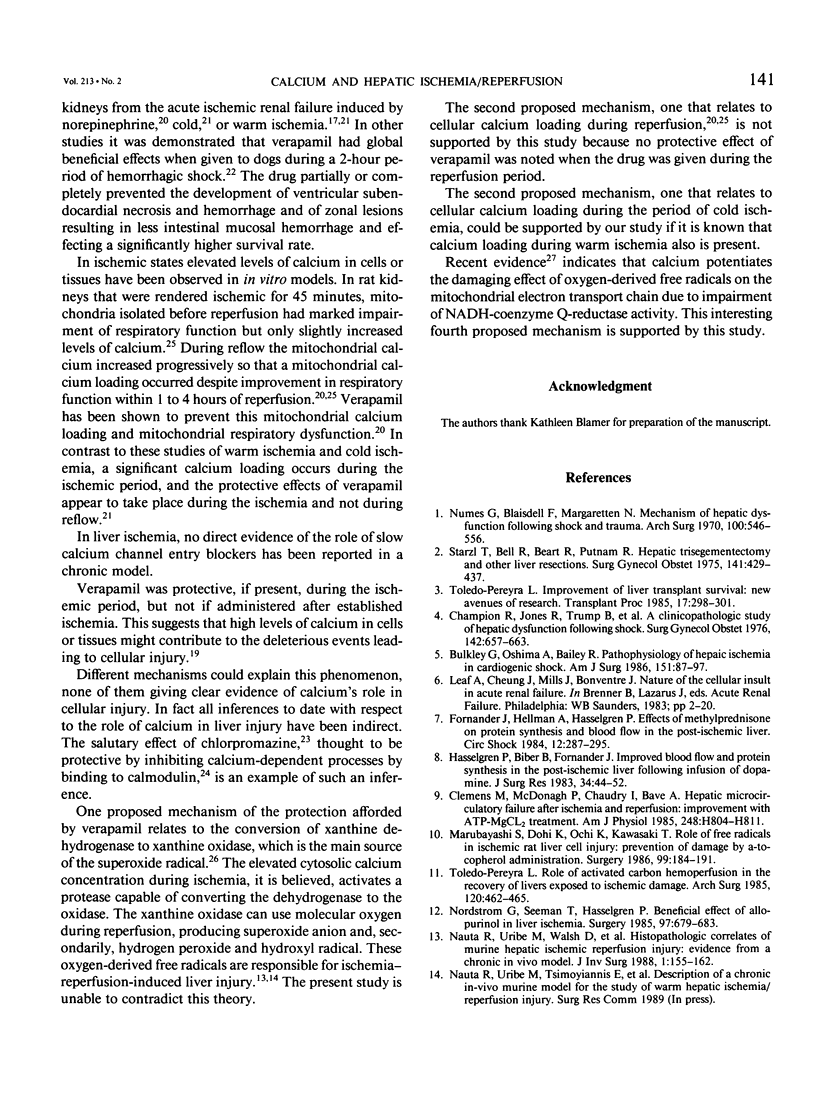
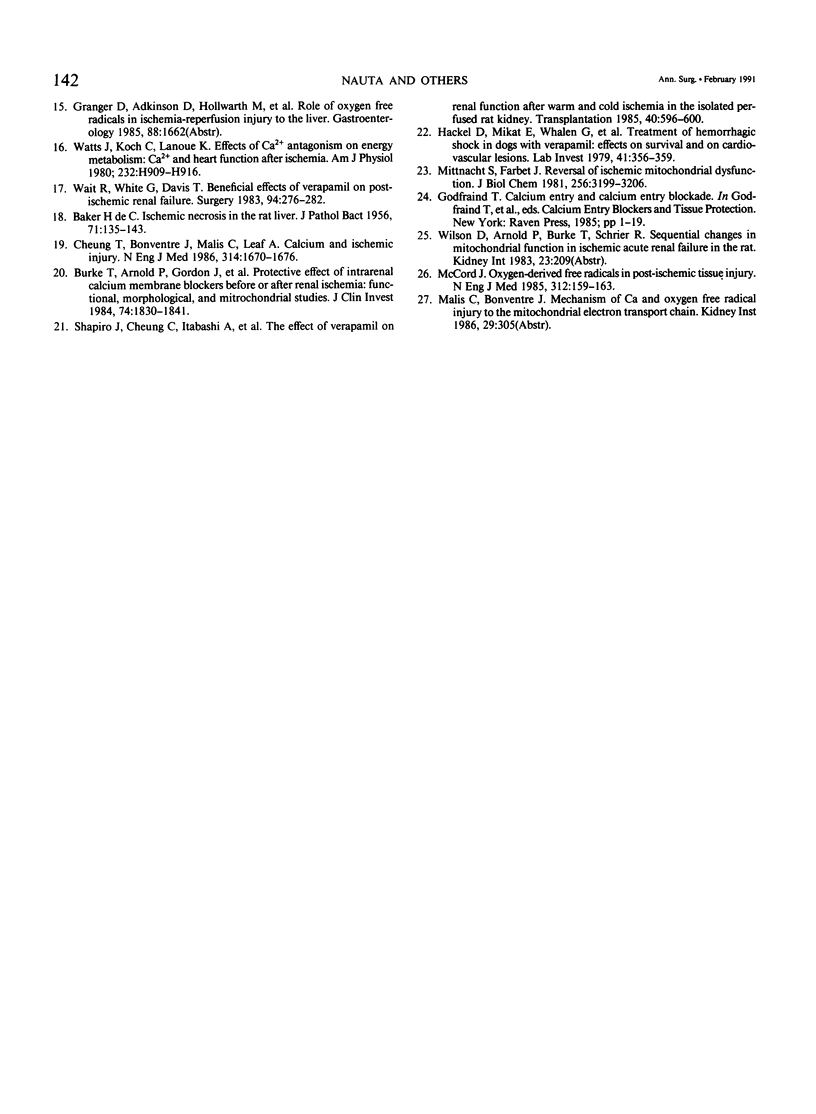
Images in this article
Selected References
These references are in PubMed. This may not be the complete list of references from this article.
- Bulkley G. B., Oshima A., Bailey R. W. Pathophysiology of hepatic ischemia in cardiogenic shock. Am J Surg. 1986 Jan;151(1):87–97. doi: 10.1016/0002-9610(86)90017-6. [DOI] [PubMed] [Google Scholar]
- Burke T. J., Arnold P. E., Gordon J. A., Bulger R. E., Dobyan D. C., Schrier R. W. Protective effect of intrarenal calcium membrane blockers before or after renal ischemia. Functional, morphological, and mitochondrial studies. J Clin Invest. 1984 Nov;74(5):1830–1841. doi: 10.1172/JCI111602. [DOI] [PMC free article] [PubMed] [Google Scholar]
- Champion H. R., Jones R. T., Trump B. F., Decker R., Wilson S., Miginski M., Gill W. A clinicopathologic study of hepatic dysfunction following shock. Surg Gynecol Obstet. 1976 May;142(5):657–663. [PubMed] [Google Scholar]
- Cheung J. Y., Bonventre J. V., Malis C. D., Leaf A. Calcium and ischemic injury. N Engl J Med. 1986 Jun 26;314(26):1670–1676. doi: 10.1056/NEJM198606263142604. [DOI] [PubMed] [Google Scholar]
- Clemens M. G., McDonagh P. F., Chaudry I. H., Baue A. E. Hepatic microcirculatory failure after ischemia and reperfusion: improvement with ATP-MgCl2 treatment. Am J Physiol. 1985 Jun;248(6 Pt 2):H804–H811. doi: 10.1152/ajpheart.1985.248.6.H804. [DOI] [PubMed] [Google Scholar]
- DE BAKER H. C. Ischaemic necrosis in the rat liver. J Pathol Bacteriol. 1956 Jan;71(1):135–143. doi: 10.1002/path.1700710118. [DOI] [PubMed] [Google Scholar]
- Fornander J., Hellman A., Hasselgren P. O. Effects of methylprednisolone on protein synthesis and blood flow in the postischemic liver. Circ Shock. 1984;12(4):287–295. [PubMed] [Google Scholar]
- Hackel D. B., Mikat E. M., Whalen G., Reimer K., Rochlani S. P. Treatment of hemorrhagic shock in dogs with verapamil: effects on survival and on cardiovascular lesions. Lab Invest. 1979 Oct;41(4):356–359. [PubMed] [Google Scholar]
- Hasselgren P. O., Biber B., Fornander J. Improved blood flow and protein synthesis in the postischemic liver following infusion of dopamine. J Surg Res. 1983 Jan;34(1):44–52. doi: 10.1016/0022-4804(83)90020-3. [DOI] [PubMed] [Google Scholar]
- Marubayashi S., Dohi K., Ochi K., Kawasaki T. Role of free radicals in ischemic rat liver cell injury: prevention of damage by alpha-tocopherol administration. Surgery. 1986 Feb;99(2):184–192. [PubMed] [Google Scholar]
- McCord J. M. Oxygen-derived free radicals in postischemic tissue injury. N Engl J Med. 1985 Jan 17;312(3):159–163. doi: 10.1056/NEJM198501173120305. [DOI] [PubMed] [Google Scholar]
- Mittnacht S., Jr, Farber J. L. Reversal of ischemic mitochondrial dysfunction. J Biol Chem. 1981 Apr 10;256(7):3199–3206. [PubMed] [Google Scholar]
- Nauta R. J., Uribe M., Walsh D. B., Tsimoyiannis E., Miller D., Butterfield A. Histopathologic correlates of murine hepatic ischemic reperfusion injury: evidence from a chronic in vivo model. J Invest Surg. 1988;1(3):155–162. doi: 10.3109/08941938809141101. [DOI] [PubMed] [Google Scholar]
- Nordström G., Seeman T., Hasselgren P. O. Beneficial effect of allopurinol in liver ischemia. Surgery. 1985 Jun;97(6):679–684. [PubMed] [Google Scholar]
- Nunes G., Blaisdell F. W., Margaretten W. Mechanism of hepatic dysfunction following shock and trauma. Arch Surg. 1970 May;100(5):546–556. doi: 10.1001/archsurg.1970.01340230012003. [DOI] [PubMed] [Google Scholar]
- Starzl T. E., Bell R. H., Beart R. W., Putnam C. W. Hepatic trisegmentectomy and other liver resections. Surg Gynecol Obstet. 1975 Sep;141(3):429–437. [PMC free article] [PubMed] [Google Scholar]
- Toledo-Pereyra L. H. Role of activated carbon hemoperfusion in the recovery of livers exposed to ischemic damage. Arch Surg. 1985 Apr;120(4):462–465. doi: 10.1001/archsurg.1985.01390280056012. [DOI] [PubMed] [Google Scholar]
- Wait R. B., White G., Davis J. H. Beneficial effects of verapamil on postischemic renal failure. Surgery. 1983 Aug;94(2):276–282. [PubMed] [Google Scholar]
- Watts J. A., Koch C. D., LaNoue K. F. Effects of Ca2+ antagonism on energy metabolism: Ca2+ and heart function after ischemia. Am J Physiol. 1980 Jun;238(6):H909–H916. doi: 10.1152/ajpheart.1980.238.6.H909. [DOI] [PubMed] [Google Scholar]



